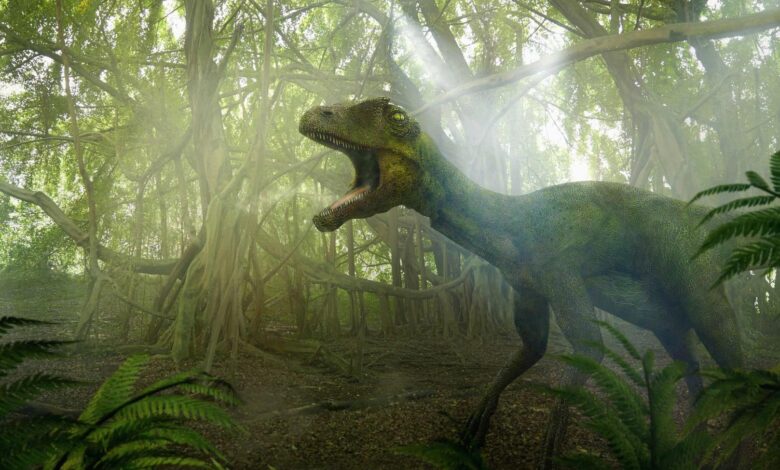
About 66 million years ago, during the time of Edmontosaurus, a duck-billed dinosaur, the world was full of gigantic, herbivorous dinosaurs. They also trampled plants as they moved, leaving large gashes the size of their bodies in forests full of conifers.
Ecologists refer to Edmontosaurus and similar dinosaurs as large herbivores. Dinosaurs affected the environment in Africa just like today’s large herbivores like elephants, rhinos and giraffes. Today’s large herbivores prevent the environment from becoming too dense with vegetation. By eating plants and moving around, they create open spaces and gaps in the forest that prevent it from becoming a thick and dense environment like a rainforest.
If the collision mass of Chicxulub to Had the Earth not hit, or had the impact been handled differently, perhaps the rainforests as they exist today would never have formed. “If there wasn’t such an effect, we would still be able to see hominids and non-avian dinosaurs as common groups,” Currano says. [گیاهی و جانوری] Let’s have today.”
After the asteroid hit, the only dinosaurs left were small birds. The lack of large dinosaurs allowed ecosystems to develop differently. According to Jaramillo, conifers were the most common tall trees at the time of the T-rex. When the extinction event wiped out these conifers, flowering plants had a better chance of surviving and expanding, Jaramillo explains.
Flowering plants benefited and strengthened from the changes in the soil. The impact of the asteroid shattered many rocks and spread mineral-rich dust, including iron, across the Earth, which improved the soil. The development and expansion of legumes also increased the level of nitrogen in the soil and the expansion of flowering plants.
Jaramillo explains that the new soil, rich in iron and nitrogen, was ideal for growing flowering plants. Because flowering plants grow faster than their conifer relatives, they can form thick canopies that shade the ground and prevent other plants from growing.
Overall, climate conditions and the effects of Earth’s fifth mass extinction caused forests to become denser. Even places as far from the equator as prehistoric Colorado hosted rainforests where birds, mammals, insects and other creatures could thrive.
The growth of new plants influenced the evolution of organisms that survived the mass extinction. Mammals, including our early primate ancestors, undoubtedly evolved as a result of this change.
In the open environments inadvertently created by the large dinosaurs, mammals had relatively limited means and fewer options for survival. Mammals could burrow underground, run on land, climb trees, or evolve to live at the water’s edge.
Due to the impact of the Chicxulub asteroid, the soil became rich in minerals
However, dense forests offer new possibilities, such as the ability to jump from tree to tree or live among the branches without being forced to the ground. Coexistence and competition for resources made the difference; This situation in ecology means that similar animals develop different behaviors, food preferences, and lifestyles to live alongside each other.
Currano explains that the complex structure of rainforests creates more habitats and allows organisms to diversify. The expansion of rainforests increased biodiversity by creating more opportunities for different species, compared to the more open, dinosaur-dominated forests of the Cretaceous.
Rainforests with dense canopies of flowering plants increase biodiversity, Jaramillo explains. This diversity is not only due to the forest structure, but also due to the wide variety of flowering plants. A major event on a planetary scale (such as an asteroid impact) inadvertently benefited the Flowerers, allowing them to expand and alter the planet’s ecosystems in unprecedented ways.
The diverse species found in today’s rainforests are a continuation of the first rainforests from the Paleocene. These primeval forests, rich in biodiversity, could only evolve after the extinction of the dinosaurs.








